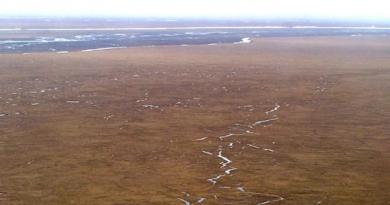Mosquito swarms in Alaska’s Arctic: The worst of the worst?

Think mosquitoes are bad in your neck of the woods this summer? It could be worse. Just ask researcher Jesse Krause, who just spent 78 days working at the University of Alaska Fairbanks’ Toolik Field Station on the North Slope. Krause has returned with images of mosquito hordes that will make your skin crawl.
Krause, a PhD student at the University of California Davis, said this summer’s mosquito bonanza was “the worst for sure” of the last four summers he has spent working at Toolik Field Station. He categorized the insects’ overwhelming numbers as “pretty god-awful.”
Krause’s studies focus on climate change in the Arctic and how the changing spring season will affect birds migrating to the North Slope. “The question that we’re really asking about is timing,” he said, and how patterns falling out of synch between green up, the emergence of insects, and birds’ migratory patterns affect their populations.
Most researchers know what they’re getting into when they arrive at Toolik, but occasionally some people can’t handle the bugs, Krause said. If mosquito bites cause you to swell up for days on end, Toolik probably isn’t the place for you. “You better know whether or not you’re going to have that reaction before you go to Alaska.”
Krause has gotten used to the bites, though. “The first couple days, the first bites swell up. If you’re getting bit a lot, you react less,” he said.
To protect themselves from armies of bloodsuckers, researchers don mesh head nets, use bug dope with 40 percent Deet, and cover up with long sleeves and pants. You have to make sure to tuck in your shirt and seal off all entry to possible skin contact. Mosquitoes will “crawl up your sleeves – that’s another thing they like to do,” Krause said.
Mesh head nets are essential to protect your cranium from bug bites and because “you kind of need
something to filter the air,” said Krause, who has accidentally inhaled plenty of mosquitoes during his time on the North Slope.
What about the noise, the constant hum of a million bugs looking to suck your blood? “The first year you definitely notice it,” he said. “Then you get used to the non-stop buzzing around your head,” he said.
How bad is this year’s North Slope mosquito infestation? It’s all relative, Krause said. Once you get a really bad day on the North Slope, as the photos above indicate, everything else seems pretty mild.
After all, Krause has seen exceptional mosquito carnage. He once saw two mosquitoes sucking the blood out of an unfortunate horse fly. The message he brings back to his Lower 48 colleagues: “Not even horse flies are safe on the North Slope.”
When friends see his mosquito photos, their initial reaction is “get out of there! And then they see all the beautiful scenery, and they’re like, ‘Oh my God.’ ” That’s when they understand the draw of the Far North.
Whether Krause will return next summer is up in the air, though he expects to return.
“I can’t stay away. The mosquitoes, they call to me,” he laughed.
Contact Laurel Andrews at laurel(at)alaskadispatch.com


